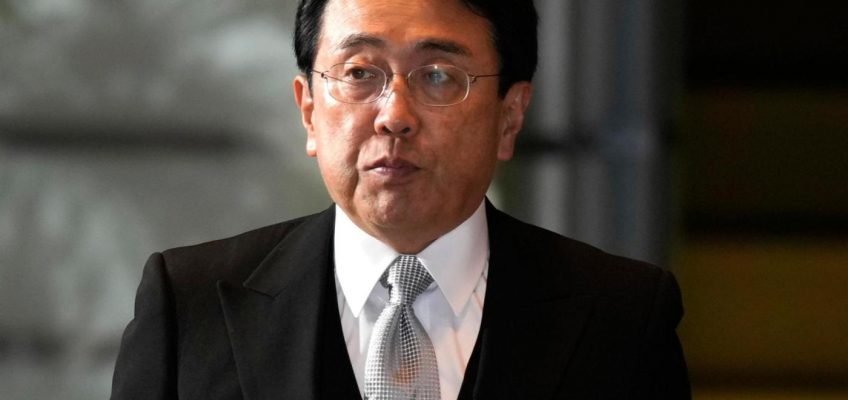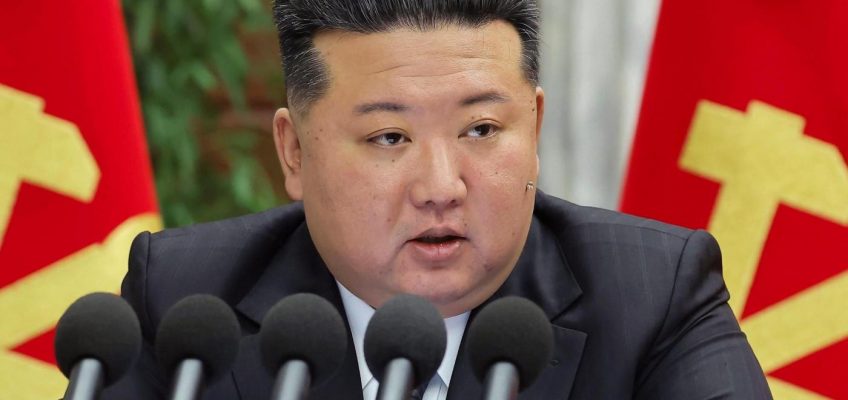By HYUNG-JIN KIM and KEN MORITSUGU, Associated Press
BEIJING (AP) — North Korean leader Kim Jong Un will make his first visit to China in six years to attend a military parade next week, the two countries said Thursday, in an event that would bring him together with a large group of world leaders for the first time since taking office in late 2011.
Today in History: August 28, Emmett Till’s brutalized body found
Postal services that suspended US shipments need time to prepare for new tariffs, UN agency says
Russian forces break into another region of Ukraine with peace efforts stuck
Ukrainian drone attacks on oil refineries have some Russian regions running on empty
Woman seeks compensation from South Korea over her forced adoption to France in 1984
With Russian President Vladimir Putin also coming for the parade, the event will underline the three-way alignment among Beijing, Moscow and Pyongyang in the face of a U.S. push to bolster its alliances with South Korea and Japan.
North Korea’s state media said Kim was invited to visit China by President Xi Jinping. Kim will be among 26 foreign leaders who attend next Wednesday’s parade in Beijing to mark the 80th anniversary of the end of World War II and China’s resistance against Japan’s wartime aggressions, China’s foreign ministry said.
“We warmly welcome General Secretary Kim Jong Un to China to attend the commemorative events,” Hong Lei, China’s assistant minister of foreign affairs, told a press conference. “Upholding, consolidating and developing the traditional friendship between China and the DPRK is a firm position of the Communist Party of China and the Chinese government.”
DPRK refers to the Democratic People’s Republic of Korea, North Korea’s official name.
Kim’s first attendance of a multination event
Since inheriting power upon his father’s death in December 2011, Kim has met Xi, Putin, U.S. President Donald Trump, former South Korean President Moon Jae-in and others. But all those summits were bilateral meetings and Kim hasn’t attended any big multilateral events with foreign leaders.
“Given that other leaders attending are mostly from pro-Russia and pro-Chinese countries, Kim likely intends to form solidarity with those Global South countries while showing he’s leader of a normal country,” said Moon Seong Mook, an analyst for the Seoul-based Korea Research Institute for National Strategy.
Observers say Kim is likely emboldened by his country’s expanding cooperation with Russia, which has helped him bear the brunt of U.S.-led sanctions and break out of diplomatic isolation. North Korea has been supplying troops and ammunition to support Russia’s war against Ukraine in return for economic and military assistance.
Others coming for the parade include the leaders of Iran, Belarus, Serbia, Cuba, Indonesia, Myanmar, Pakistan and Malaysia. No leaders from major Western countries including the U.S. are expected to attend, in part because of their differences with Putin over the war in Ukraine. The parade is expected to feature some of China’s newest weaponry and a speech by Xi.
It’ll the first time Xi, Kim and Putin gather at the same event
China, North Korea and Russia are embroiled in separate confrontations with the U.S., but they haven’t formed a clear three-way alliance so far.
Xi, Putin and Kim haven’t met in trilateral formats, though they’ve met one another bilaterally.
“Kim’s attendance is significant for his own international stature, but it also holds weight in the balance of alliances between the U.S. and China,” said Soo Kim, a former CIA analyst. “Xi, Putin, and now Kim attending the parade cements a visible statement about the alignment between the three countries.”
The three leaders likely share desires to check the strengthening cooperation among the U.S., South Korea and Japan, which have been meeting regularly and expanding trilateral military exercises. Despite their shared goals, it’s not clear how far China, North Korea and Russia will go to further cement ties.
China remains the largest purchaser of Russian oil and technology provider supporting the Russian war machine, though it is officially neutral in the conflict.
China has also long been North Korea’s biggest trading partner and main aid provider, but there have been questions about their relations in recent years. Chinese group tours to North Korea have remained suspended for years.
Kim’s China trip may signal his interest in resuming US diplomacy
Kim’s visit to China could also be related to efforts to restart diplomacy with Trump, who has repeatedly highlighted his relationship with Kim and expressed his hopes to resume talks.
In all, Kim traveled to China four times from 2018 to 2019 to meet Xi. His first and fourth visits happened just before he met Trump for their earlier high-stakes nuclear negotiations.
“Pyongyang’s illicit cooperation with Moscow has strained ties with Beijing, even as China’s political and economic support remains vital for the North Korean regime,” said Leif-Eric Easley, professor of international studies at Ewha Womans University in Seoul.
“To reengage Trump from a position of strength, Kim seeks to repair relations with Xi, and attending the parade in Beijing is a highly visible way of doing that,” Easley said.
During a meeting with South Korean President Lee Jae Myung in Washington earlier this week, Trump spoke of one of his past summits with Kim at the Korean Demilitarized Zone. Responding to a question over whether he would return to the Demilitarized Zone, Trump told reporters, “I loved it. Remember when I walked across the line and everyone went crazy.”
North Korea has so far dismissed Trump’s outreach, but many analysts say it would return to talks if it determines the U.S. would make bigger concessions.
North Korea likely wants greater cooperation with China
While Kim’s foreign policy priority is Russia now, many observers expect him to take steps to improve ties with China. It’s unclear if North Korea and Russia would maintain the same level of cooperation after Ukraine war ends.
In 2023, about 97% of North Korea’s external trade was with China, while 1.2% was with Russia, according to Chinese data.
Cheong Seong-Chang, deputy head of private Sejong Institute in South Korea, said Kim likely decided to go to China to ask for assistance as North Korea needs resources for lavish celebrations of two domestic events — the 80th anniversary of the ruling Workers’ Party in October and a party congress early next year.
Kim reported from Seoul, South Korea. Christopher Bodeen in Taipei, Taiwan contributed to this report.




